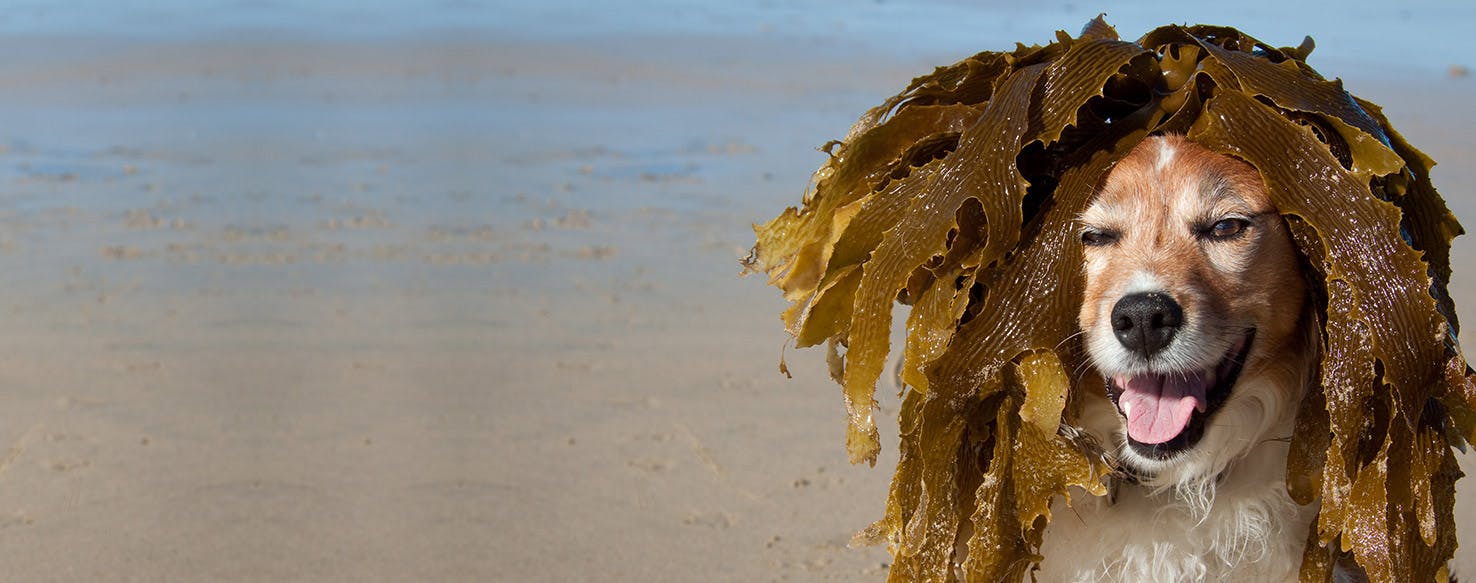- Home
- The Daily Wag!
- Behavior
- Why Dogs Like Kelp
Why Dogs Like Kelp

Common
Normal
Introduction
Is there anything more fun than a walk on the beach with your dog? Sun, wind, and sticks to throw. Fresh air, birds to bark at and all the people are happy. The beach is a great place for both of you. So you’re having a good time, your dog is barking at the waves and she’s generally going nuts. And then, it happens: your dog sees a clump of seaweed on the beach, runs ahead of you, flops down and starts rolling. She seems to go all out to get as much stinkiness in her fur as possible. Thank heavens that your dog found seaweed rather than a dead fish! Some people collect shells, your dog collects weird scents. Different strokes, right?
The Root of the Behavior
Dogs love disgusting scents. And they make some weird choices for an animal with such a strong sense of smell. Dogs love to roll around in poop, in trash, in seaweed, you name it. If it’s gross and objectionable, your dog will do her best to take on its smell. And as you hold your nose and draw yet another bath for your smelly best friend, you are left with one big question: Why? Some experts believe that dogs are drawn to malodorous things in an instinctual effort to mask their presence. In the wild, canines are predators, and wolves, coyotes, and other wild dogs are known to roll in the dung of prey animals such as antelope, or to even roll in their carcasses to further mask themselves while stalking their prey. Simply put, if your dog smells like a dead opossum, she thinks she’s invisible. Perhaps dogs are trying to carry back information to their pack. For example, bees will return to the hive when they’ve found a good source of food. Coyotes and wolves have been known to roll in interesting scents, go back to the pack, and return with other members.
Another theory as to why dogs like to roll in stinky stuff is to show off. Dogs communicate through scent, and by rolling in the stench of the things they’ve encountered, they are showing off where they’ve been and what they’ve seen. Humans love to send pictures over the internet, but dogs generally don’t have reliable Internet access, so they are reduced to using odor. If you’ve ever seen teenage girls at a perfume counter, this idea will be familiar to you. No one really knows why dogs do the things they do, but they likely have a lot of different reasons for their behavior, just like people. One thing is for certain, a dog seems to feel compelled to roll in gross, nasty stuff unless she is prevented from doing so. Fortunately, there is one stinky item that is actually good for her.
Need advice about your pet's health?
Get answers fast from a veterinary professional 24/7 in the Wag! App.
Get Vet ChatEncouraging the Behavior
Dogs like to roll in unpleasant stuff, but when it comes to seaweed, their instincts have put them on the right path. Seaweed is actually quite healthy to eat. It’s 25% protein and is one of the best plant sources of beneficial minerals and amino acids. It’s rich in iodine and tryptophan and is actually low in sodium. There are several different types of seaweeds, but the one most commonly eaten is kelp. It contains vitamins A, B, D, E and K. It contains sodium alginate, also known as algin, which removes heavy metal from a dog’s body. The iodine in kelp stimulates the thyroid gland, which increases a dog’s metabolism and balances the oil production in the skin, which in turn promotes a denser, shinier coat and helps treat a dog’s itchy skin. In its raw form, eating kelp prevents tartar and plaque buildup on teeth. Kelp is a healthy supplement for a dog, but you don’t have to live near the ocean in order to make sure your dog gets the full advantage of kelp. There are a number of supplements you can add to your dog’s food, either by sprinkling over her food or putting it in a pill pocket or even peanut butter or cream cheese.
Other Solutions and Considerations
If you live near the ocean, please don’t try to feed your dog the seaweed that washes up on the shore. Seaweed near the shore often has pollutants or contaminants which are not good for your dog. Additionally, seaweed that has washed up on the shore, although it is still wet, has been sundried. If your dog eats this seaweed, not only will she be consuming pollutants and sand, but the seaweed will expand in her stomach and may cause an intestinal blockage. In order to avoid contaminants, you should give your dog kelp supplements that were harvested from the deep ocean. Norwegian kelp is also a good choice. Finally, it’s important to follow dosage suggestions carefully. Your dog will benefit from some additional iodine, but too much can result in iodine toxicity, which will result in watery eyes, lethargy, and stomach upset.
Conclusion
Your dog loves rolling in strong smelling substances, most of which are not good for her, and there are many that can make her very sick. Seaweed can also make your dog very sick, however, if properly treated, kelp can actually be very beneficial to your dog. Kelp is also very healthy for people, although in different amounts. Although there’s a lot of people food that dogs like to eat, how often is it something that’s good for both people and dogs?
Written by a Shiba Inu lover Patty Oelze
Veterinary reviewed by:
Published: 02/09/2018, edited: 01/30/2020
More articles by Patty Oelze
